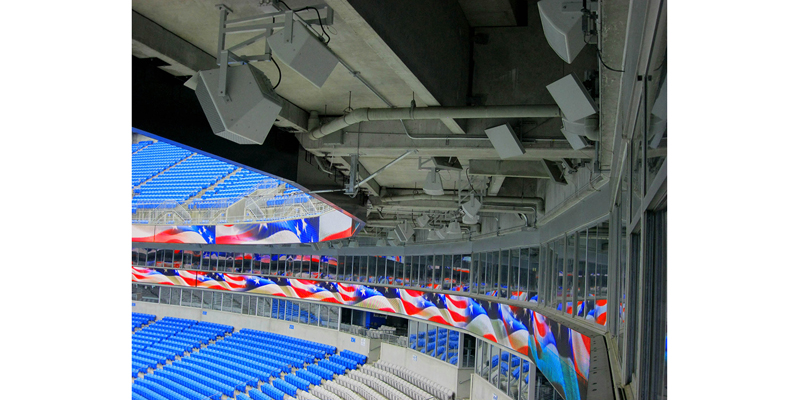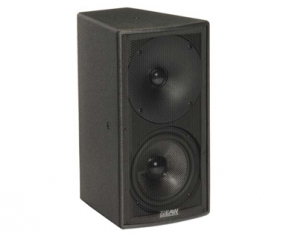The Bank America Stadium, home to the Carolina Panthers NFL franchise, recently underwent a complete sound reinforcement system overhaul featuring EAW loudspeakers.
The original point-source, end zone system was installed when the stadium opened in 1996 and upgraded to more powerful loudspeakers in 2007 – but seven years later the fans expect more. The stadium owners brought in a team from Wrightson, Johnson, Haddon & Williams, Inc.’s (WJHW) Denver office to design a new, distributed system that would better cover all of the seats in the stadium and provide the high quality audio that their fans expect.

Mark Graham, audio consultant for WJHW, worked closely with Cliff Miller, owner of SE Systems and head of audio for the stadium, to create a design that would fit the stadiums current and future needs. Parsons handled the installation and integration of the new sound reinforcement system.
“There have been a number of stadiums switching from and end zone to distributed audio systems,” explains Graham. “Many end zone systems are throwing 600 feet and, depending upon temperature and weather, it can be hard to cover everyone equally and intelligibly. A distributed system solves those problems.”
The Panther stadium is a typical football bowl shape with a seating capacity of 74,000. The arena seating is divided into a lower bowl, two story club level with executive suites, and the upper bowl.
Graham divided the lower bowl into zones that cover similarly sized seating area. Each zone utilizes an EAW QX564i-WP and four MK2366i-WP loudspeakers – mounted on the overhang from the upper deck. The QX564i-WP provides long throw coverage down to the field wall. Each pair of MK2366i-WP loudspeakers are positioned to provide mid-throw or down-fill coverage for the same zone.
“The QX is a great long-throw loudspeaker for these applications,” he adds. “It’s a nice compact box with a really high output level that works perfectly in this type of venue.
He continues, “The MK loudspeakers have been a standard for these distributed system for a while. The great thing is that there are a variety of horn patterns available so depending upon architecture, I can keep the system looking and sounding consistent whether the loudspeaker has a 60×60, 90×90 or 60×40 coverage pattern. The same is true of the QX. They offer versatility while keeping the visual consistent.”
The club level features 158 executive suites, club seating and eight fully furnished lounges for the club level patrons. Located directly behind the upper bowl overhang where the distributed QX and MK loudspeakers reside, the suites and lounges do not receive much sound reinforcement from the stadium system.
To rectify the situation, Graham specified the installation of EAW CIS400 white ceiling speakers in each suite along with individual volume control. In order to eliminate low frequency build up in the rooms from the aforementioned QX loudspeakers, Graham deployed EAW TT212-WP LF steering woofers. When placed a ¼ wavelength behind the QX loudspeaker in an end-fired configuration it minimizes LF build up in the suites and at the same time increases the LF down at the field wall.
It was bit more challenging to configure a distributed system for the upper deck. Fortunately, there are four sizable lighting towers located in each corner of the stadium that Graham utilized for loudspeaker placement, once again relying on the QX and MK loudspeakers.
“Three QX564i-WP, five MK2366i-WP and five MK2364i-WP loudspeakers on each of the four lighting towers manage to blanket the seats in the upper bowl near the lighting towers but couldn’t reach everywhere,” adds Graham. “We placed additional QX boxes in the upper portion of the scoreboard and end zone displays to cover the seating in front of those areas. The seating right in front of the scoreboards is taken care of by EAW JF60zPL-WP loudspeakers recessed in the lower fascia of the display.”
“This was a really good example of how a collaborative effort can go smoothly,” Graham concludes. “When the president of the team is walking on the field during testing and gives me a thumbs up after three days of tuning? I feel good about that. Overall, everything worked really, really well.”





